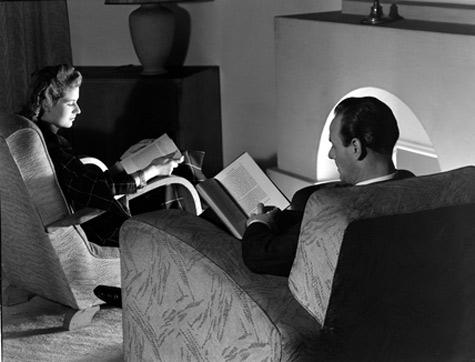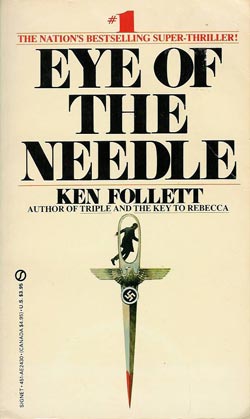
Thrillers and mysteries have long been seen as split along gender lines, and for the first seventy years or so of the twentieth century, they actually were. But things have been changing.
Thrillers were originally written by, for, and about men. The earliest thriller, The Riddle of the Sands by Erskine Childers published in 1903, had not a single female character initially until his publisher forced Childers to add one to the book. Until Ken Follett’s best-selling thriller, The Eye of the Needle, with its female protagonist in 1978, women were only occasional minor characters within thrillers, and the primary readers of thrillers were men. The thriller arose and became popular in the same time period as the western and the hard-boiled detective novel (which grafted the danger and violence of the thriller onto the mystery). All were parts of a male-oriented fiction with the shared elements of idealized male protagonists braving physical danger and escalating threat that built to cathartic endings of explosive violence.
Mysteries, on the other hand, have always had female readers and writers from Louisa May Alcott in the 1860s and her British counterparts, such as Mary Elizabeth Braddon, to Anna Katharine Green in 1878 with the first American best seller of any kind and on into the Golden Age with Agatha Christie, Dorothy L. Sayers, Mary Roberts Rinehart, Josephine Tey, Margery Allingham, Mignon G. Eberhart, Helen McCloy, Margaret Millar, and many others down to the present moment.
Ken Follett suggests that the thriller (and the men’s fiction in which it played a major role) arose at the beginning of the twentieth century because the nature of war had changed. War was no longer the province of a professional military class. With conscription, the violence and danger of war threatened all men and boys.
I think he’s right and would add that it’s no coincidence that women began to make headway into the thriller field as major characters, readers, and eventually writers during the time immediately following the Vietnam War. Of course, this was also the heyday of Second Wave feminism, which probably played a part in the shift. It was only when the threat of conscription lessened that female major characters and female writers were allowed into the thriller field. This time period also coincided with dwindling numbers of male readers of novels of any kind. So it probably had a practical side, as well.

Where the original thrillers were male-only in major characters, readers, and writers, that fact has changed now with women as lead characters, readers, and writers on a much more equal basis. The violence at this extreme of the spectrum, however, has continued to ratchet up higher and higher. At the other end of the spectrum lies the pure cozy, a subgenre of the traditional mystery genre, with mostly female lead characters, readers, and writers and no real danger or violence (beyond the fairly bloodless murders that form the puzzles). Women are the majority of readers throughout the spectrum between these two extremes, and women write roughly half the books in the entire combined mystery/thriller genre.
A popular subgenre of the thriller is the serial-killer book. These may involve strong mystery elements in which the protagonist must figure out who the serial killer is so he or she can catch the murderer and stop the killing, or they may involve straight thriller elements in which the killer’s identity is known and he must be stopped from murdering the particular woman who is either the protagonist or the love interest of the protagonist.
I’ve used the specific terms “him” for the serial killer and “woman” for the potential victim because in these books almost inevitably the serial killer will be a man and the victims overwhelmingly women (as in real life). These books often offer some of the most intense and sickening violence, committed by the psychopathic serial killers and sociopathic recreational killers (or “rakes,” as the FBI calls them). The torture and mutilation of women presented in many of these books often troubles feminists, understandably, some of whom even go so far as to call the most extreme “torture porn.” Yet most of these authors have researched the documented history of serial killings, and it would be extremely difficult to outdo on the page what actual serial killers have done in real life. Also, let us remember that now many of these serial-killer thrillers are written by women.
The actual gender split in the mystery-thriller field has faded, but perceptions seem stuck in the old days when thrillers were exclusively a male province. The fact that women buy and read the majority of books of all kinds plays a huge part in this. I think it’s also led to the proliferation of blended-genre books today. For example, urban fantasy, which is a melding of the hard-boiled mystery with magic, supernatural creatures, and other fantasy elements, draws the vast majority of its readers from the female reading population. I think we’re going to see more and more blended-genre books being published.
Is the cozy serial-killer thriller just around the corner? Or is that a step too far? I can’t wait to see, can you?
Man and woman reading by a fireside, 1950, photograph may be purchased from the Science and Society Picture Library.
Linda Rodriguez’s second Skeet Bannion novel, Every Broken Trust (St. Martin’s Press/Minotaur Books), will be published May 7. Her first Skeet novel, Every Last Secret, won the Malice Domestic Best First Traditional Mystery Novel Competition, was selected by Las Comadres National Book Club, and was a Barnes & Noble mystery pick. She spends too much time on Twitter as @rodriguez_linda and on Facebook at https://www.facebook.com/LindaRodriguezWrites. She blogs about writers, writing, and the absurdities of everyday life at http://lindarodriguezwrites.blogspot.com.

I’d totally write a cozy serial-killer thriller if they’d let me. Or a serial-killer cozy. As a cozy writer, the fact that I can’t write about a serial killer if I want to, annoys me no end.
no numbers? little value.